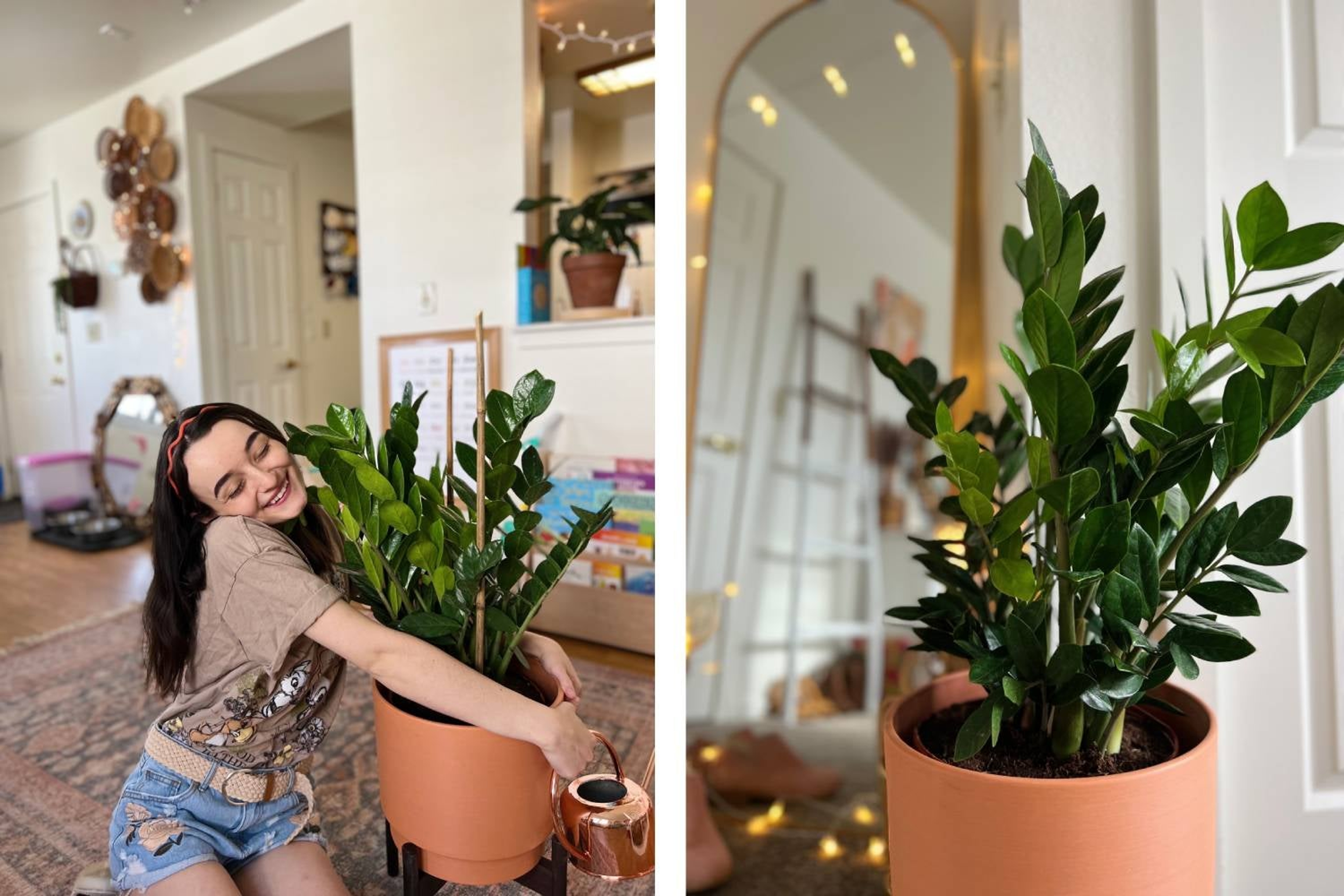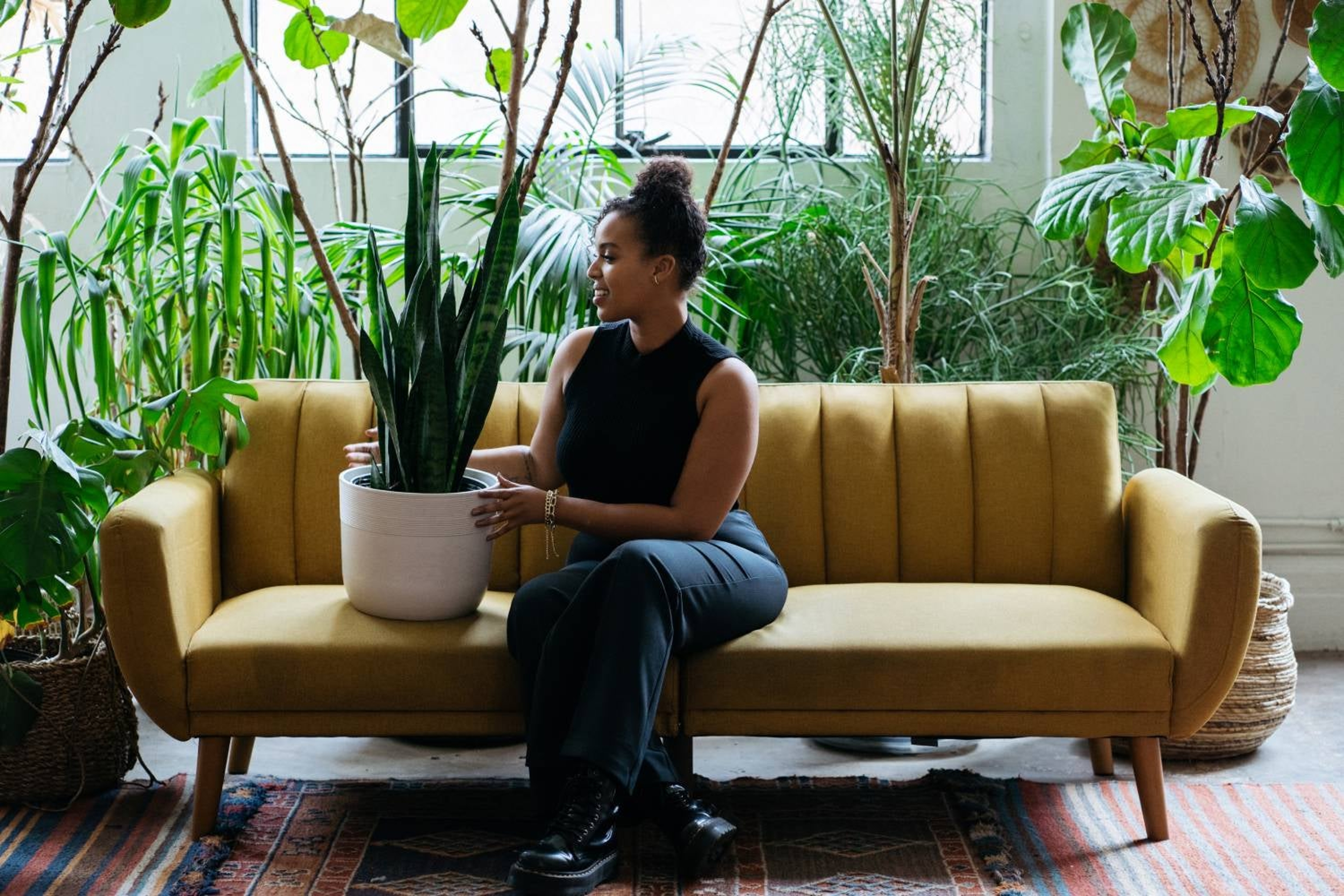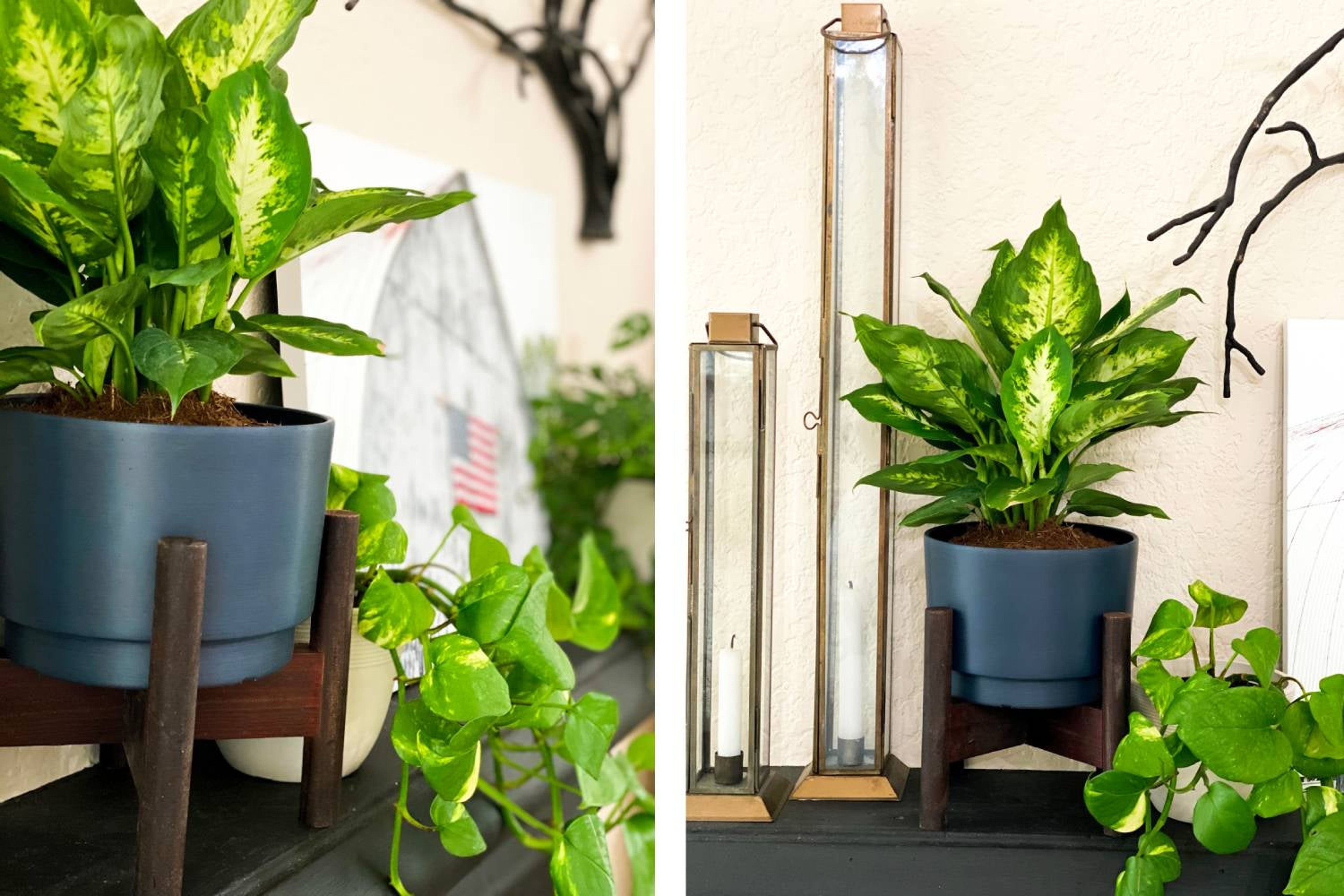If your space is short on light, you can still have an entire green palace with plants that thrive in low light. 💡
What is Low Light?
Low light doesn’t mean no light – light keeps plants green and healthy (hello, photosynthesis!) It should be bright enough to see, read or cook by. If you see a plant stretching to grow in one direction, it typically means it is trying to get more light. Give it a quarter turn every once in a while to keep its growth even.
Want to place plants so they get the right amount of light? Use the compass on your phone to figure out which direction your windows face.
- North: no direct sun, plants can be close to or on the windowsill
- East: place plant at least 5’ away from windows
- West or South: place plant at least 10’ away from windows
Most importantly, place plants where you will see them on a regular basis. This way you’ll be able to spot any problems and enjoy the benefits of plants more.
While low light indoor plants tolerate low light, they will grow faster in medium light.
6 Best Low Light Indoor Plants
1. ZZ Plant

This is the go-to plant for those who don’t have a lot of light or a ton of time. One of the toughest around, ZZ plant is a great choice for beginner plant parents. Whether you're able to give it steady care or often get distracted — ZZ plant survives it all. And, it looks great with its upright growth and glossy dark green foliage.
Plant in a well-draining indoor potting mix and allow the soil to dry out between waterings. Fertilize once a month or according to package directions with a houseplant fertilizer. Make sure your ZZ is receiving medium to bright indirect light, although it can tolerate lower light conditions. Water every 2-3 weeks, allowing the soil to dry our between waterings.
2. Snake Plant

If you're looking for a low-light, easy-care houseplant, you’ve found it. Snake plant, also called Mother-In-Law Tongue, has stiff, sword-like leaves edged in gray, silver or gold. Snake plant's sleek look makes it perfect for modern interiors.
It prefers a standard, porous potting mix. In the autumn and winter months, be sure to let it dry completely between waterings and water every 2-3 weeks. Fertilize once a month or according to package directions with a houseplant fertilizer. The Snake Plant will thrive in medium to bright indirect light, but can tolerate low indirect light.
3. Pothos

AKA Devil's Ivy, this no-fail houseplant is all about the foliage. Its dark green leaves are splashed with shades of yellow, cream or white.
Grow it in hanging baskets, containers, or train it to grow up trellises. Place it on desks or tabletops, as well as coffee tables and side tables in dens, living rooms, and bedrooms. In fact, you could grow pothos in just about every room of your home or office. University research shows having a plant at work can help improve concentration.
Use a standard potting mix and water once a week. Feed pothos with a standard plant food for houseplants once a month or according to package directions. Despite the plant’s love for bright indirect light, it will do well in lower light conditions as well.
4. Monstera
Be adventurous with a tropical Monstera. Huge, 2-foot-wide leaves evoke memories of your last island vacation. The leaves look like they have holes or cuts in them, giving rise to its other common name: Swiss cheese plant. Keep it leafy with regular pruning.
Use a standard potting mix. Keep well-watered, as Monstera does not like dry soil. Use a houseplant fertilizer in spring and summer, especially if the leaves start to look pale around the veins. Monstera plants do best when they receive more than 5 hours of daily bright, indirect light, but they can also do well in medium to low light. Avoid direct light, as this can burn the leaves.
5. Dieffenbachia

This tropical shrub shows off lush leaves marked in cream, yellow or white, making dieffenbachia a top pick for brightening dim corners. Dieffenbachia adds color and texture without flowers – boom without the bloom – to any room or office. Because it grows upright, it's an excellent choice to grow along an empty wall or near a large piece of furniture.
Choose a standard potting soil. Keep well-watered, as dieffenbachia does not like dry soil. Use a houseplant fertilizer in spring and summer or according to fertilizer package directions. During the growing season, dieffenbachias like regular moisture so it may be necessary to water a large dieffenbachia about twice a week. In the winter, you can cut back on the water (remember to check the top of the soil to ensure it isn't moist before watering).
6. Parlor Palm Plant (Neanthe Bella Palm)

This slow-growing palm eventually grows up to four feet tall. Its popularity is due to its tropical look and low-maintenance care. Use this low light indoor plant to break up a section of a blank wall, to fill an empty corner, to soften the edges of windows or furniture, or act as a living sculpture at the end of a side table.
Plant using a well-draining, indoor potting mix. Fertilize once in spring with a fertilizer for houseplants or according to package directions. In winter, allow the top two inches of soil to dry before lightly watering. Parlor palms will do their best in bright, filtered sunlight.
To learn about some more easy to care for plants, read our blog, "7 Low Maintenance Indoor Plants (7 Plants for Beginners)."







